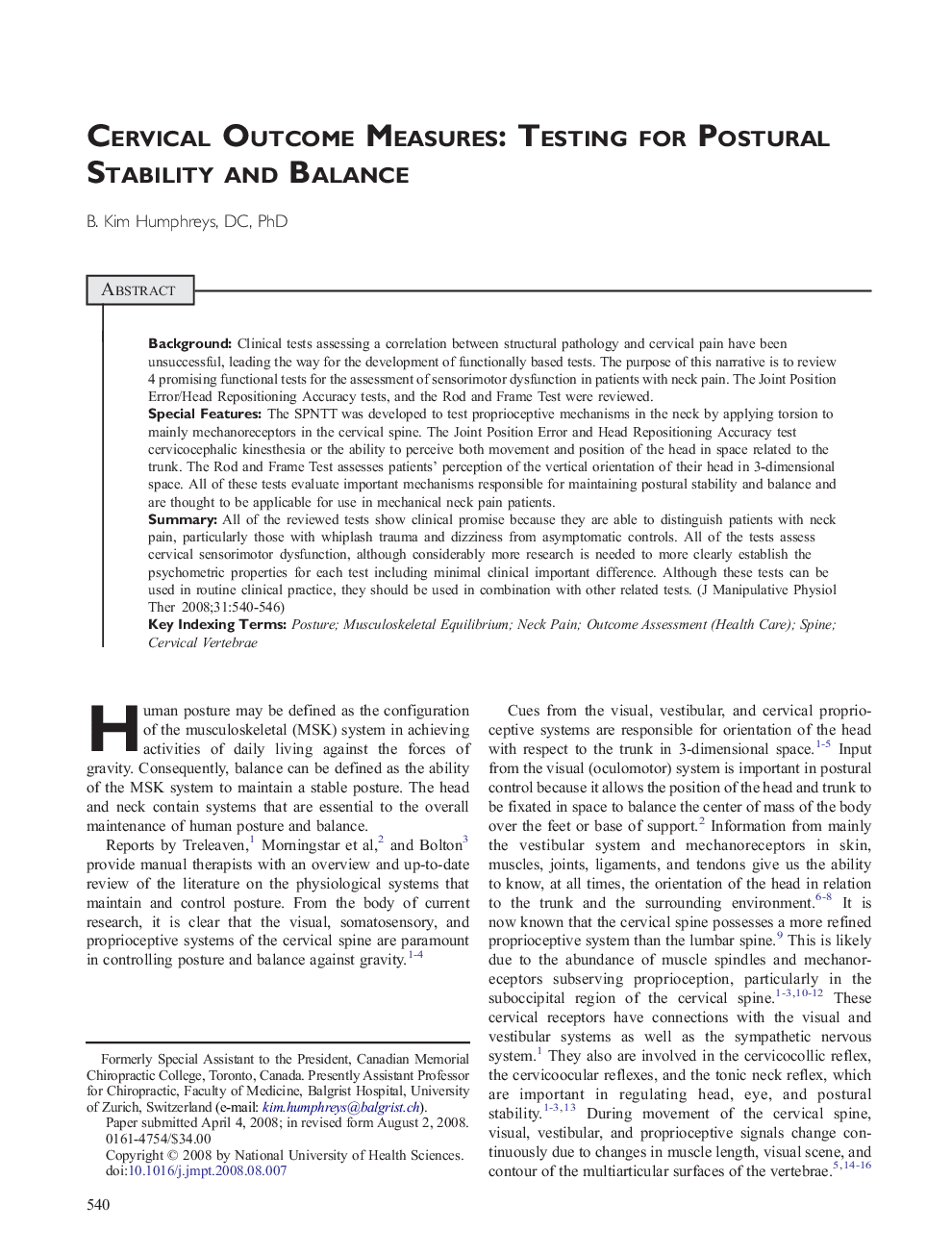| Article ID | Journal | Published Year | Pages | File Type |
|---|---|---|---|---|
| 2621654 | Journal of Manipulative and Physiological Therapeutics | 2008 | 7 Pages |
BackgroundClinical tests assessing a correlation between structural pathology and cervical pain have been unsuccessful, leading the way for the development of functionally based tests. The purpose of this narrative is to review 4 promising functional tests for the assessment of sensorimotor dysfunction in patients with neck pain. The Joint Position Error/Head Repositioning Accuracy tests, and the Rod and Frame Test were reviewed.Special FeaturesThe SPNTT was developed to test proprioceptive mechanisms in the neck by applying torsion to mainly mechanoreceptors in the cervical spine. The Joint Position Error and Head Repositioning Accuracy test cervicocephalic kinesthesia or the ability to perceive both movement and position of the head in space related to the trunk. The Rod and Frame Test assesses patients' perception of the vertical orientation of their head in 3-dimensional space. All of these tests evaluate important mechanisms responsible for maintaining postural stability and balance and are thought to be applicable for use in mechanical neck pain patients.SummaryAll of the reviewed tests show clinical promise because they are able to distinguish patients with neck pain, particularly those with whiplash trauma and dizziness from asymptomatic controls. All of the tests assess cervical sensorimotor dysfunction, although considerably more research is needed to more clearly establish the psychometric properties for each test including minimal clinical important difference. Although these tests can be used in routine clinical practice, they should be used in combination with other related tests.
